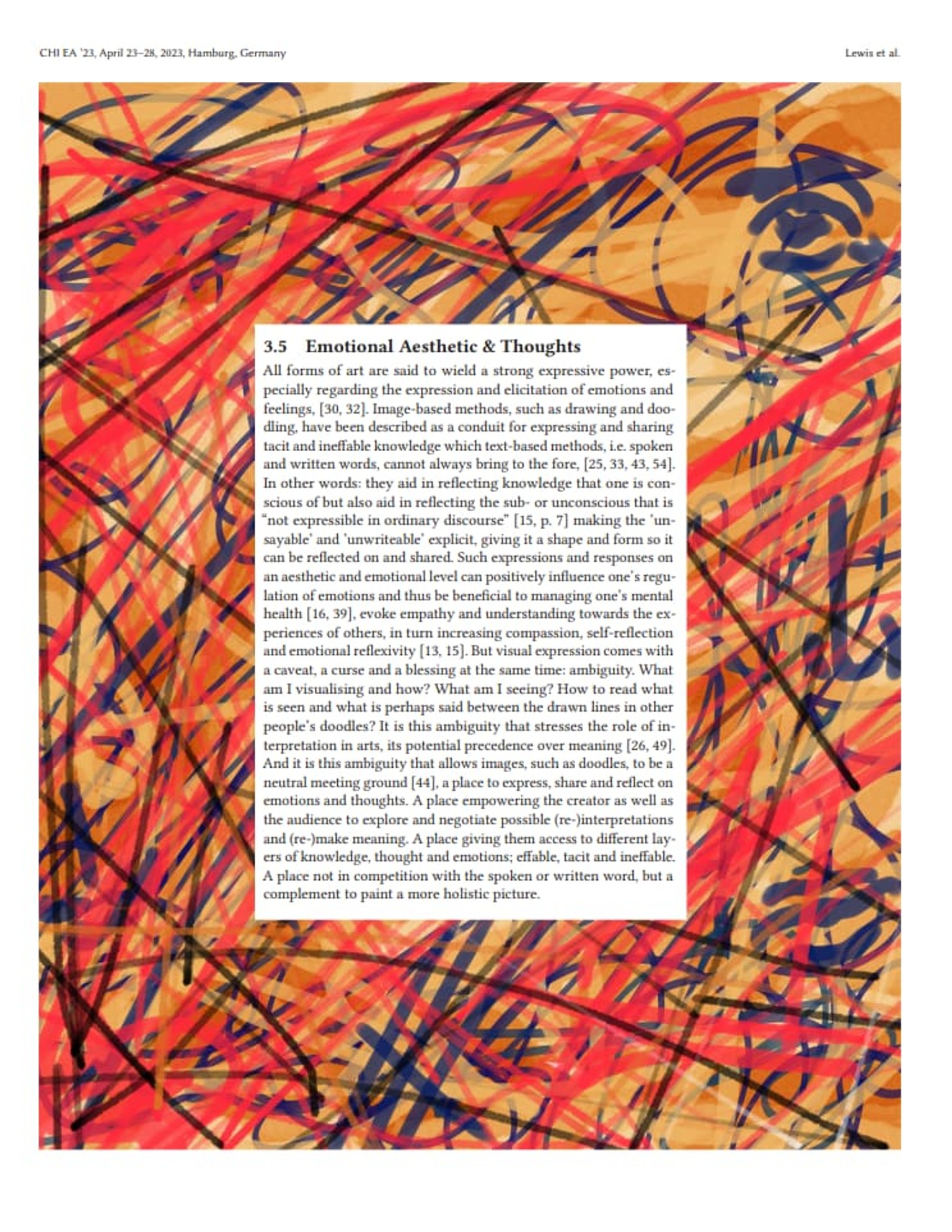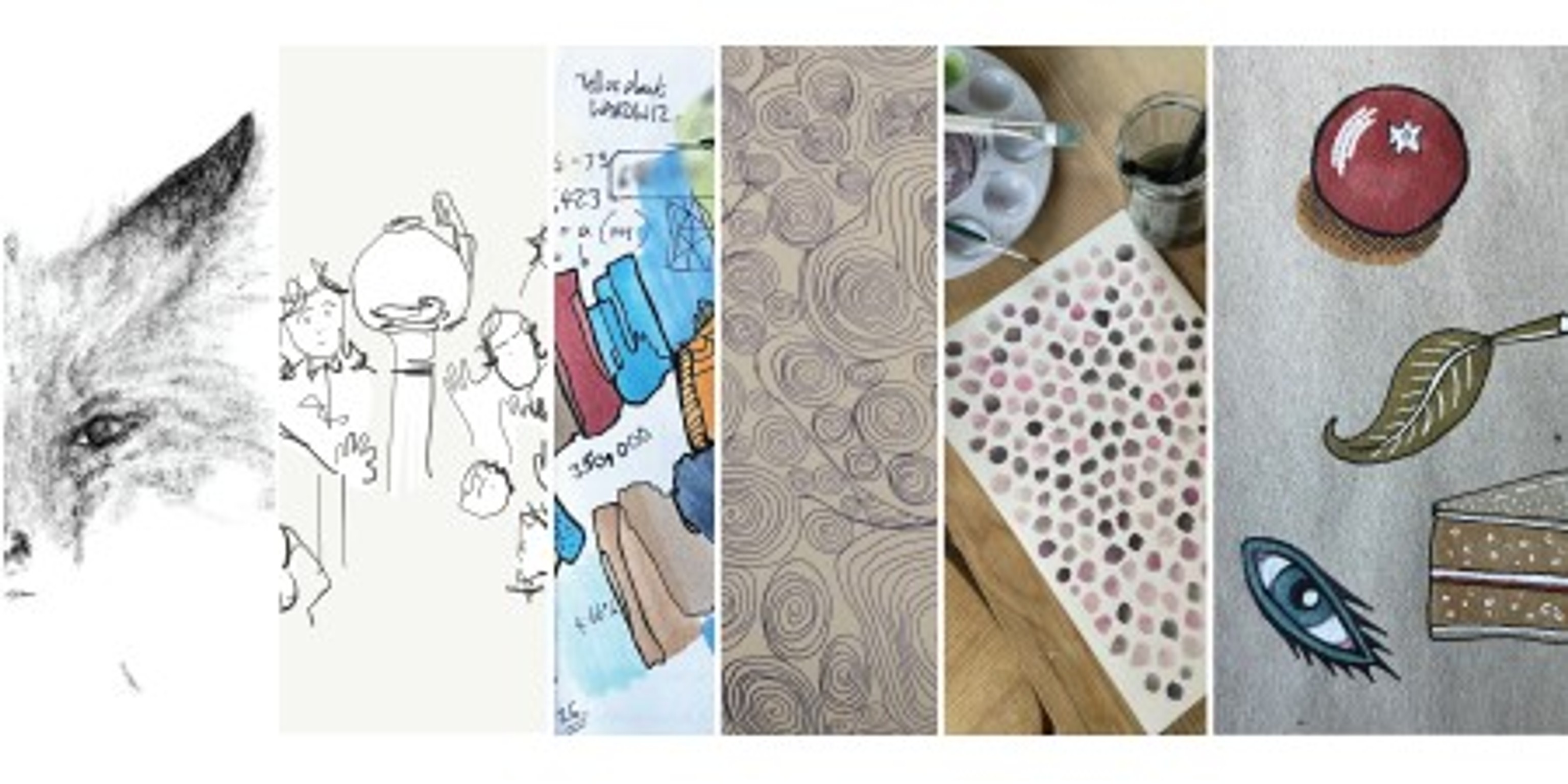
Doodle Away: An Autoethnographic Exploration of Doodling
Design Futures

Collaborators Makayla Lewis, Miriam Sturdee, Mafalda Gamboa
Abstract
Four researchers engaged in doodling during our online meetings, seminars, and conferences. We also kept an autoethnographic diary along with a collection of our doodles.
Method
We reflected and then discussed through affinity diagramming, whereby five themes were developed: More than human, Designerly ways of sketching, Traces of time and space, Emotional aesthetics & thoughts, Sketching materials, techniques, and tangible characteristics.
Takeaways
This was a paper as part of AltCHI: Objects, Movements, and Physics at ACM CHI conference 2023.
We think we are not alone when we say: navigating the new online spaces surrounding us is more difficult than we could have predicted. In this paper, we explore doodling as a tool for self-control while attending passive online spaces.
We, four researchers in the field of Human-Computer Interaction, engaged in doodling during our online meetings, seminars, and conferences. We also kept an autoethnographic diary along with a collection of our doodles. We reflected and then discussed through affinity diagramming,
whereby five themes were developed: More than human, Designerly ways of sketching, Traces of time and space, Emotional aesthetics & thoughts, Sketching materials, techniques, and tangible characteristics.
This was a paper as part of AltCHI: Objects, Movements, and Physics at ACM CHI conference 2023.
The Five Themes
More than Human
Doodling is a unique activity because it allows us to think beyond ourselves and our immediate surroundings, leading to new perspectives and ideas. Doodles are a glimpse into the unconscious and have their own meaning and value, existing in the world as their own artifact, separate from our conscious attention.
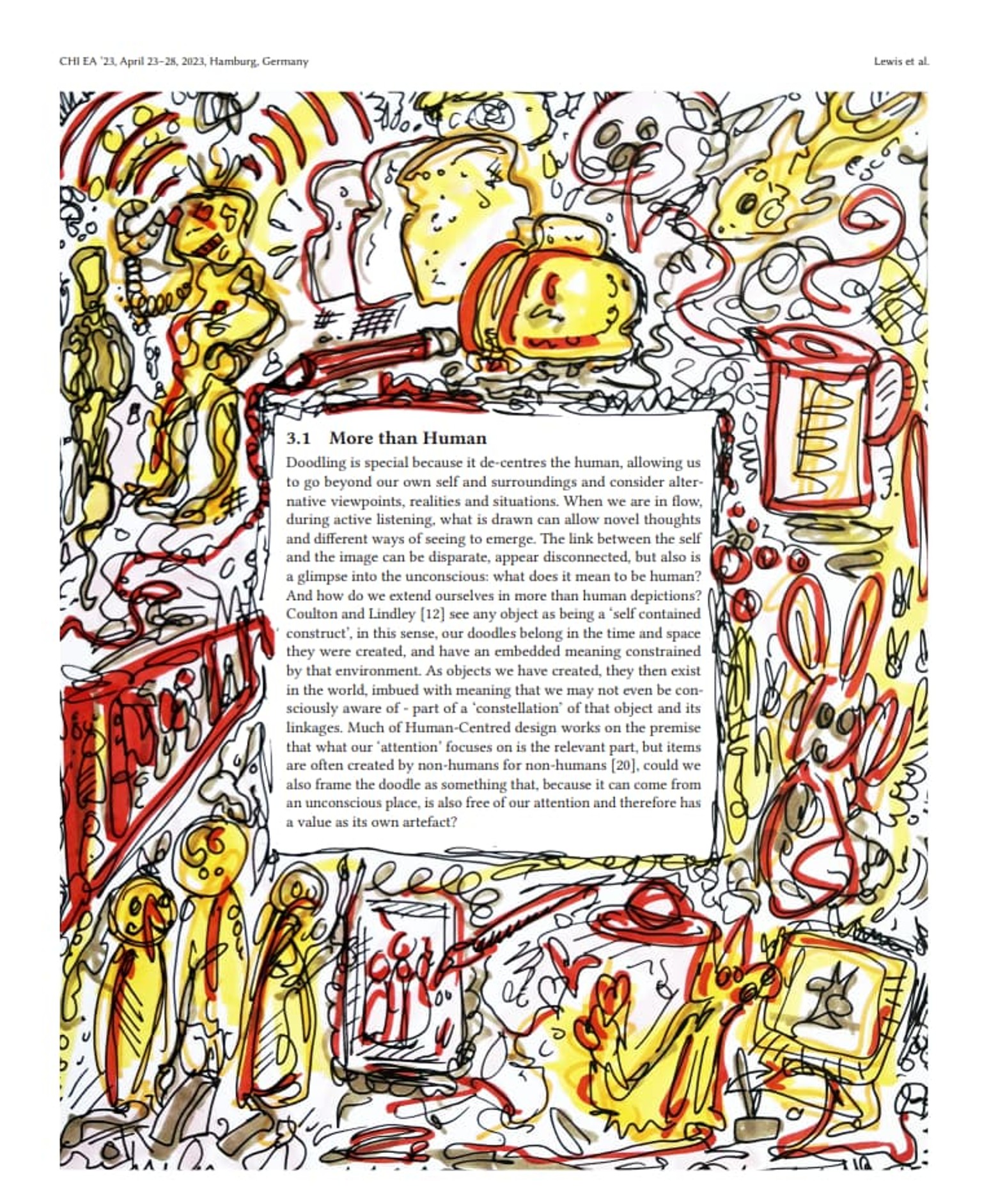
Designerly Ways of Sketching
Doodling often reflects the ways of thinking used in design, combining visuals and words to create concepts and ideas. Doodles can serve as material traces and documentation, and can be curated into a design workbook for future reference and inspiration.
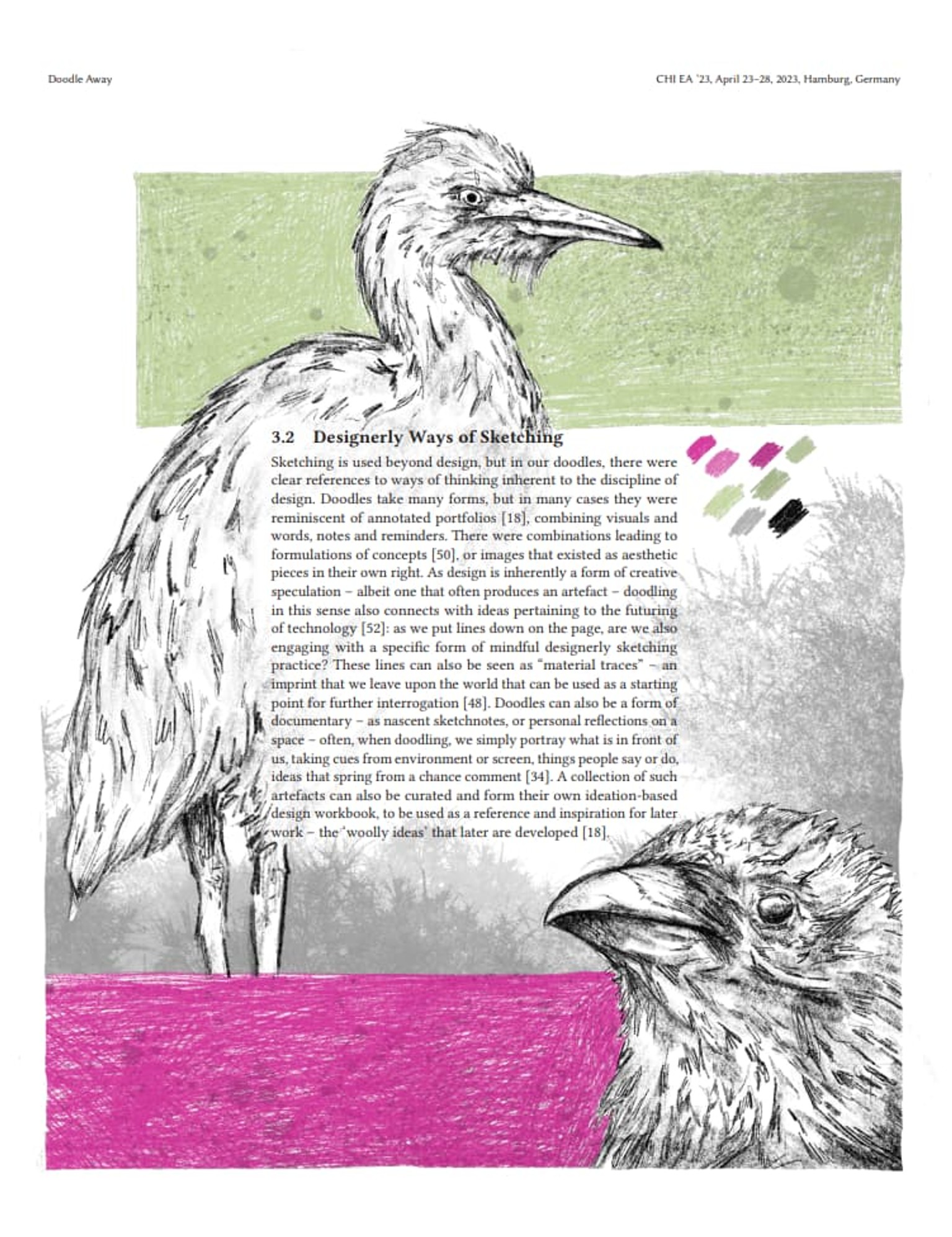
Sketching Materials, Techniques & Tangible Characteristics
Different facets are used to describe the process and product of drawing or doodling. These facets include materials, techniques, colours, and style, and are highly interconnected with the perception and meaning-making of people engaging with the drawing or doodle. This exploration of doodles ‘from the surface’ presents a way of investigating their effects and benefits such as increased focus, stress relief as well as enhanced creativity and imagination.

Traces of Time and Space
The importance of time and space in Human-Computer Interaction (HCI) has been widely discussed but is often difficult to consider. Doodles created during online meetings can reflect the nuances of time and space in our interactions, highlighting the importance of considering these dimensions in technology design.
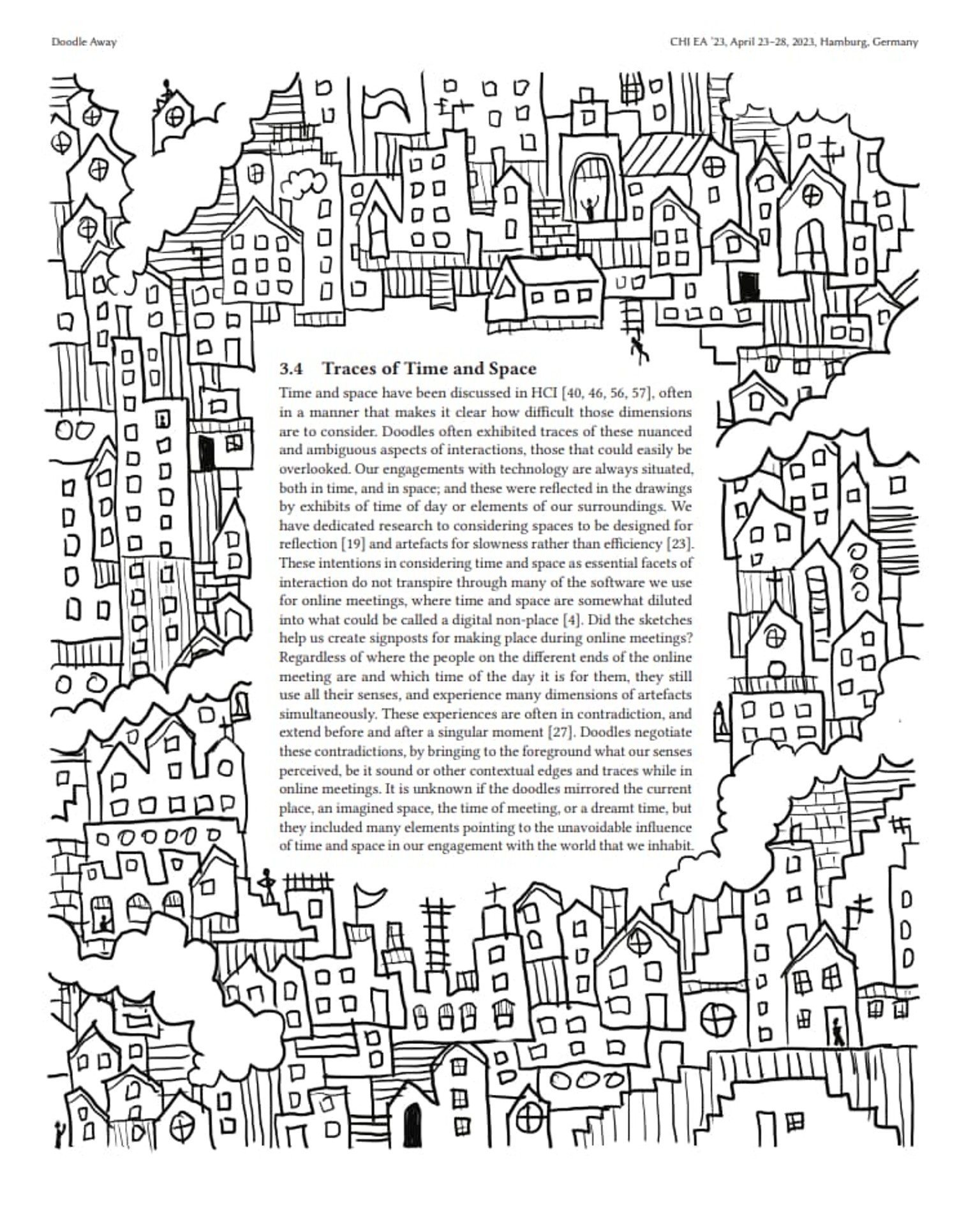
Emotional Aesthetic & Thoughts
All forms of art are said to wield a strong expressive power. Image-based methods, like drawing and doodling, are able to express ineffable knowledge that spoken and written words, cannot always bring to the fore, reflecting the conscious and unconscious. But visual expression comes with ambiguity. It is this ambiguity that stresses the role of interpretation in arts, its potential precedence over meaning. And it is this ambiguity that allows images, such as doodles, to be a neutral meeting ground, a place to express, share and reflect on emotions and thoughts.
